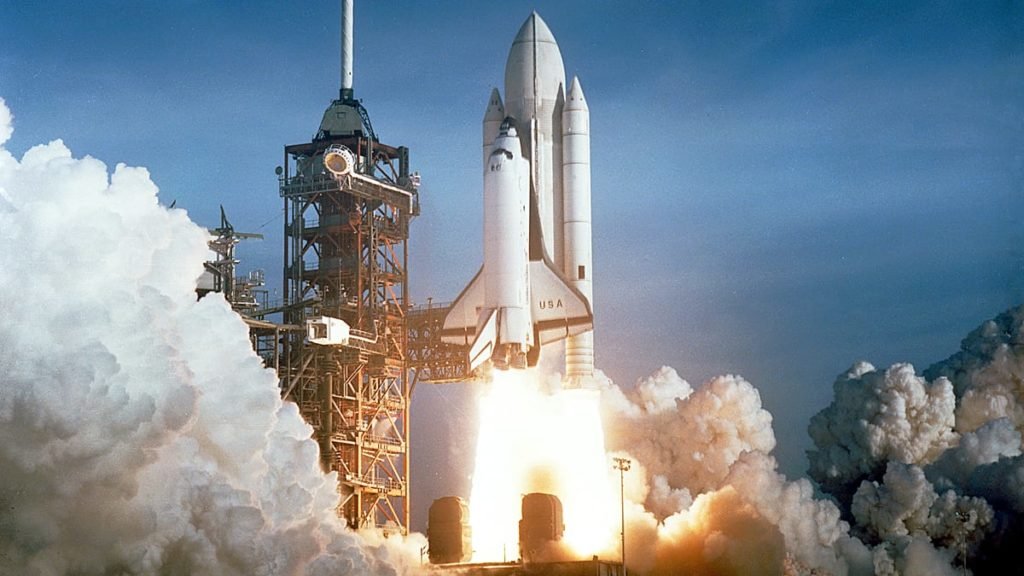What is a rocket and its uses – How do rockets work: This article, written in a simplified form, contains necessary information regarding what is a rocket and how do rockets work. Rocket and balloon work on a similar mechanism. Its mechanism is based on Newton’s third law of motion. This law states that every action has an equal and opposite reaction. You must have noticed when you release the nozzle of a filled balloon. The air coming out pushes the balloon here and there. The air pushing the balloon act as the thrust makes the balloon fly.
The balloon will fly stable if the opening of the balloon is in solid-state and contains some mass. Similarly, the bottom of the rocket contains mass, making it bulky. So, it can fly with stability in one direction, i.e., the rocket doesn’t move here and there. You must be wondering how do rockets work on such a small principle. We will be talking about how do rockets work in the latter part of this article.
See also: Lightyear one – Car on solar energy and Long-range electric car
Table of Contents
What is a rocket (uses of the rocket)

Rocket is a long, cylindrical tube, spacecraft, or missile which moves up the ground, exuding a large amount of energy and pressure in the form of gas. It is used to send space shuttles, astronauts, space crafts, satellites, etc. in the space. The frame of the rocket is made of light but sturdy materials such as aluminium and titanium. Rockets are encased in a solid and thin layer to protect it from high temperatures and maintains cold temperatures within the rocket. This layer is known as the thermal protection system. Rockets are extremely heavy and weigh hundreds of tons. Most of the weight comprises of fuel, i.e., liquid hydrogen or liquid oxygen. Some of the rockets also use solid fuel instead of liquid fuel.
See also: Theory of relativity | What is time travel and is time travel possible?
How do rockets work
The working of a rocket is based on Newton’s third law of motion. Rocket burns the fuel, i.e., liquid hydrogen or liquid oxygen, and throws out hot gases through its nozzle. This hot gas pushes the rocket forward. There is a direct relationship between the fuel burnt and speed of the rocket, the more the fuel burnt, the more is the speed of the rocket. The gas coming out through nozzle acts as action, and upward thrust acts as a reaction. You can better understand this phenomenon with the help of the example given in the first part of this article.

See also: Flying Car – Flying Car Technology and Prototypes
Rockets contain a large amount of fuel that helps to resist the earth’s gravitational force. Rocket needs to reach the extreme speed of about 27,990 km/h to leave the thick layers of atmosphere and enter the space.
Some of the rockets work in 2-3 stages, i.e., parts. These parts contain fuel. This process is known as staging. Rockets separate these parts to reduce the weight after using fuel from that part. The parts separated from the rocket falls into the ocean and are reused later.
The working of a rocket depends on the four crucial parts of the rocket. Rocket comprises of four parts:
See also: Bloodhound | Fastest Car in the World 2020
Payload
The payload is the carrying capacity of the rocket. It is a cone-shaped part that contains the things, i.e. space shuttles, astronauts, satellites, etc. which are required to be sent in the space.

Fuel
This part consists of liquid hydrogen or any other type of fuel. When it is burnt, it emits a tremendous amount of energy through the nozzle in terms of pressure and heat, acting as an upward thrust for the rocket.
Oxygen: This part of the rocket contains oxygen required by rocket engines to operate in space without air, i.e., airless environment.
See also: Top 12 Fastest Land Animals in the World
Rocket Engine
The rocket engine is the most critical and complex part of the rocket. The rocket engine is further divided into sections:
a) Mixing chamber
The mixing chamber acts as a powerhouse for the turbine. It contains a small amount of oxygen and fuel, which provides power to the turbine.
See also: Top 7 Fastest Manmade Things in the World
b) Power turbine
The power turbine helps in working with the fuel pump and oxygen pump and acts as a powerhouse for these pumps. It provides power to these pumps.
c) Fuel pump
The fuel pump is used to boost the fuel to the combustion chamber.
d) Oxygen pump
The oxygen pump helps in raising oxygen to the combustion chamber.
e) Combustion chamber
The combustion chamber is also known as a mixing tank, which helps in mixing the fuel and oxygen. In the combustion chamber, burning of fuel takes place, and a massive amount of energy and hot gas is produced.
See also: Top 10 Fastest Cars in the World – Both Official and Unofficial
f) Throat
Throat helps in increasing the pressure of the hot exhaust, i.e., hot gases generated by the combustion chamber.
g) Nozzle
The pressurized gas produced in the combustion chamber is thrown out through the nozzle after passing from the throat. Nozzle increases the speed of the gas because it is expanded as it is shaped like a bell.
I hope you have liked this article and will share this useful information with your friends.


Pingback: BRABUS GMBH | Everything You Need to Know About BRABUS